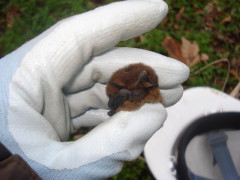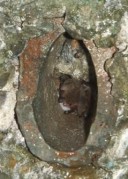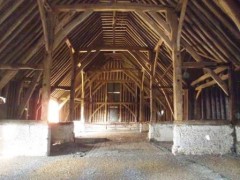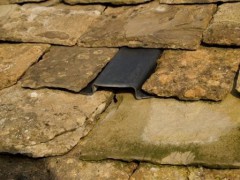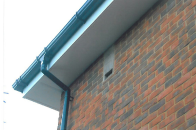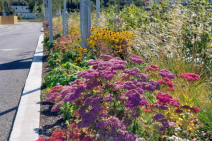Bat Survey and Mitigation
Introduction
We specialise in carrying out bat surveys, providing advice on appropriate mitigation and compensation when bats will be unavoidably affected by development or tree work.
Working in accordance with the nationally recognised good practice guidelines published by the Bat Conservation Trust in 2023, we offer surveys, mitigation and advice to a high professional standard.
We have prepared and been granted over 100 European Protected Species Licences for a range of developments and bat species. John Wenman was one of the first ecologists registered to act under the Bat Mitigation Licence (formally Low Impact Class Licence) by Natural England in 2015; since then we have completed work on multiple projects affecting small numbers of common bat species under the Licence.
Why are bat surveys needed?
All 18 (of which 17 are breeding) bat species resident in the UK are fully protected by the Wildlife & Countryside Act 1981 (as amended) and by the Conservation of Habitats and Species Regulations 2017 (‘Habitat Regulations’). In summary, the legislation combined makes it an offence to:
- Damage or destroy a breeding site or resting place or intentionally or recklessly obstruct access to a structure or place used for shelter by a bat;
- Deliberately, intentionally or recklessly disturb bats; in particular any disturbance which is likely to impair the ability of bats to survive, breed or reproduce or nurture their young; or in the case of hibernating or migrating bats, to hibernate or migrate; or to affect significantly the local distribution or abundance of the species;
- Deliberately kill, injure or take any bat
Any development work that has the potential to commit any of the offences listed above will require a bat survey to be carried out by a suitably qualified ecologist. We have extensive experience in undertaking detailed bat surveys to be submitted with planning applications for a variety of residential and commercial developments including a range of structures such as residential dwellings, commercial buildings, industrial units, trees, bridges and churches.
What does a bat survey entail?
An initial daylight inspection of the structure is carried out. This includes a thorough inspection of any roof spaces or internal areas accessible by bats, and a survey of the exterior of the structure. This preliminary survey identifies any evidence of a bat roost and potential features that could be used by roosting bats. Such features include gaps between tiles and cladding on buildings, woodpecker holes in trees and cracks in the brickwork of bridges.
If the initial daylight inspection reveals evidence of roosting bats or potential features that could be used by roosting bats, which would be affected by the work planned, further detailed survey is likely to be required. Further survey typically involves completing evening emergence and dawn re-entry surveys with the aid of bat detectors. This is to establish if bats are present or likely to be absent, or to determine the status of the roost if present. This detailed information is essential in determining the impacts that the development would have on bats and is usually required to support a European Protected Species Licence application to allow the works to take place lawfully.
Mitigation and Licensing
When surveys show that impacts on bats or their roosts are unavoidable we will provide advice on how to mitigate the impacts of the project. For example this may include timing the works to avoid periods of the year when bats are especially sensitive to disturbance such as the summer breeding season and/or carefully soft stripping parts of a roof used by bats. Where the loss of an existing roost cannot be avoided, for example where buildings supporting bats are to be demolished, we can provide advice on how compensatory roosting sites can be provided within new buildings, for example by installing bat access points within a roof (see photograph above).
A European Protected Species Licence issued by Natural England of confirmation of the site's registration under the Bat Mitigation Class Licence (if appropriate) will be required where projects will unavoidably disturb bats or affect their roosting sites. We have extensive experience of preparing European Protected Species Licence applications (having completed over 100 applications) and working under the Bat Mitigation Class Licence to allow works affecting bat roosts to go ahead lawfully and acting as the named ecologist allowing us to carry out and complete mitigation work on sites with successful results for the bats and the client (See our project examples).

